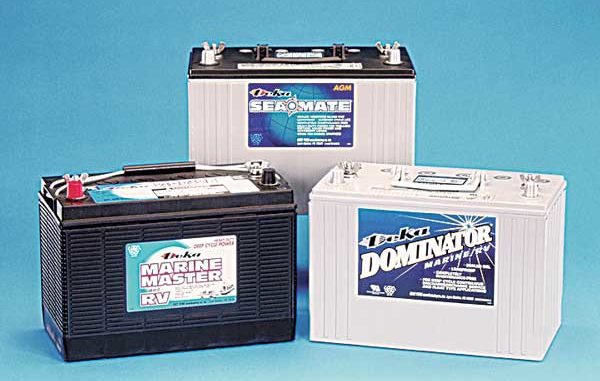
Think jumping mullet are only good to eat for trophy trout? Think again.
Many fishermen and boaters call any sealed, maintenance-free marine battery a gel battery, and that isn’t correct. We discovered in the charging column the differences between types become more than just semantics if you destroy a battery by using the wrong charger on it. The three types of lead-acid batteries popular today use flooded-cell, AGM or gel technology. Flooded-cell batteries are the oldest type and generally offer more storage capacity per pound of weight and per dollar of cost. Each battery cell contains positive and negative plates submerged in liquid electrolyte. Flooded batteries bubble and spew a bit during normal charging, causing some of the liquid to be lost through the vent caps.
Regular checks must be made to ensure that the liquid level in all cells remains above the battery plates. Letting one cell go partially dry can shorten a battery’s life, sometimes drastically. The electrolyte level is raised by adding distilled water to the cell (never add acid to a battery).
Flooded batteries with detachable cell caps are called full-maintenance models because they require regular watering and cleaning to remove the mess made by the normal bubbling and spewing, which is called “gassing.”
Some flooded batteries are labeled as maintenance-free or low-maintenance models because they have larger electrolyte reservoirs and/or special alloys in their lead plates to limit gassing. Some of these have vent caps that are not removable because they can last their expected lifetime without needing any water. Others have removable caps, and if you accidentally overcharge the battery and lose some water, it can be replaced.
Gel batteries are filled with liquid electrolyte that is gelled with the addition of silicates right at the factory. The cells are sealed and operate under a slight positive internal pressure. There is no liquid in the battery, and none should be added. In fact, breaking the seal on a cell to check it ruins the battery.
Absorbed glass mat (AGM) batteries are factory-filled with liquid electrolyte that is absorbed into glass mats packed tightly between the plates in each cell. There is no free liquid in them, and they won’t leak even when punctured. Like gels, they operate under positive pressure and must remain sealed.
Gel and AGM batteries have low internal resistance, allowing them to give up current faster, recharge faster and self-discharge much more slowly during storage than flooded batteries. Their self-discharge rates vary according to brand and ambient temperature, but they can typically lose from less than one percent to three percent of their charge per month.
Flooded batteries must be recharged as soon as possible after being discharged and maintain at least 70 to 75 percent of a full charge between trips to the lake to prevent plate sulfation, a condition that kills most flooded batteries long before they reach old age.
Trojan Battery Company estimates that its flooded batteries self-discharge at about 13 percent per month, making it a good idea to keep an onboard automatic charger plugged in 24/7 or check them regularly and recharge them as necessary.
In a nutshell, flooded batteries generally offer a lower price and more storage capacity for boaters and anglers willing to keep them clean and charged. AGM batteries cost and weigh a bit more per unit of storage capacity, but they require no maintenance and can be recharged with most onboard chargers. Gel batteries are often the heaviest and most expensive per unit of capacity, and they have special charging requirements, but they are also maintenance-free and some manufacturers claim they handle heavy deep-cycling better than AGMS.
The best battery for you is the one that not only fits your budget but requires an acceptable amount of maintenance. The price advantage of a flooded battery is lost if you don’t take proper care of it, and it dies after only one season.


